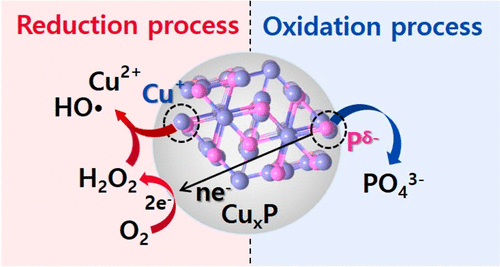Publication
Advanced Redox Technology Lab
Publication
Advanced Redox Technology Lab
Journal papers
Copper phosphide (CuxP) was synthesized and tested for its reactivity for generating H2O2 through spontaneous reduction of dioxygen under ambient aqueous condition. The in situ generated H2O2 was subsequently decomposed to generate OH radicals, which enabled the degradation of organic compounds in water. The oxygen reduction reaction proceeded along with the concurrent oxidation of phosphide to phosphate, then copper ions and phosphate ions were dissolved out during the reaction. The reactivity of CuxP was gradually reduced during 10 cycles with consuming 8.7 mg of CuxP for the successive removal of 17 μmol 4-chlorophenol. CoP which was compared as a control sample under the same experimental condition also produced H2O2 through activating dioxygen but did not degrade organic compounds at all. The electrochemical analysis for the electron transfers on CuxP and CoP showed that the number of electrons transferred to O2 is 3 and 2, respectively, which explains why OH radical is generated on CuxP, not on CoP. The Cu+ species generated on the CuxP surface can participate in Fenton-like reaction with in situ generated H2O2. CuxP is proposed as a solid reagent that can activate dioxygen to generate reactive oxygen species in ambient aqueous condition, which is more facile to handle and store than liquid/gas reagents (e.g., H2O2, Cl2, O3).
